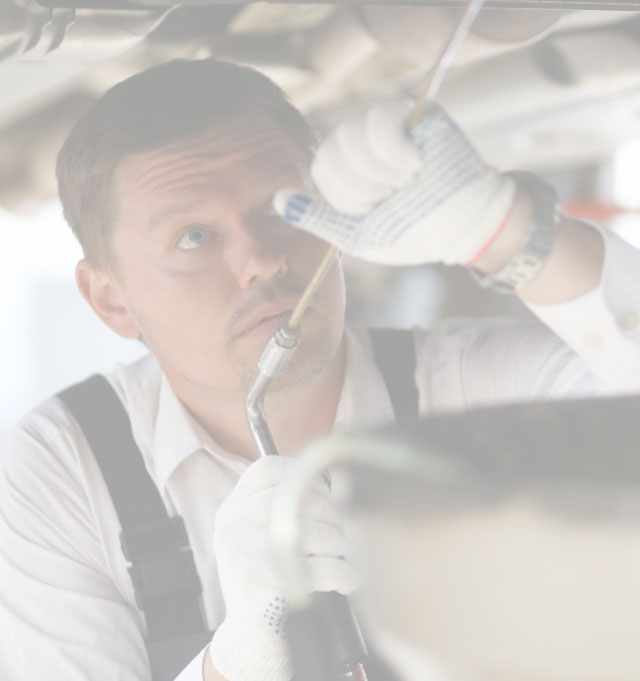The Correct Tyre Pressure
In nearly every article you see online regarding tyres and vehicle safety, tyre pressure is right up there with the most common advice provided. It’s also one of the most common things to get wrong.
While most modern vehicles have some kind of TPMS (tyre pressure monitoring system), typically a warning light comes on once the pressure has dropped to a certain threshold, many systems won’t alert you to a slow leak until the pressure has dropped by a significant amount.
Why air pressure is important
Ensuring you have the correct amount of air in your tyres is important, not only from a fuel economy standpoint, but also your performance and traction. With higher pressures, your ‘footprint’ becomes smaller, but your risk of punctures increases.
Underinflation
When it comes to tyre pressures, underinflation is by far the most common issue - tyres don’t tend to magically gain more pressure without help - and it’s also the most dangerous.
Tyres can lose pressure through the obvious locations, the air valve or from the interface between the tyre and the wheel. However, it’s more common for tyres to slowly lose air through the rubber itself. As the tyre material flexes and moves, air molecules can escape through the tyre. This is normal and you can expect to see between 1 and 3 psi a month lost through this phenomenon.
The lower the tyre pressure, the larger the contact patch or ‘footprint’ will be as the tyre sags. Off-roaders use this to their advantage when driving across soft surfaces and rocks, but on roads at higher speeds, a larger contact patch is much more likely to be affected by water on the road and aquaplaning.
Underinflated tyres will also get hot when driving for extended periods at higher speeds. This excessive heat build-up is the leading cause of tyre blowouts as the layers of the tyre begin to separate. Tyre blowouts are often sudden and dramatic.
Generally, you can tell if your tyres are running at too low pressure if they’re wearing both shoulders of the tread, rather than the middle of the tread.

Overinflation
Accidentally overinflating your tyres is rare, but can happen. Typically it’s as easy as misreading the gauge while checking your tyre pressures. Higher pressures aren’t as dangerous as underinflated tyres, but there are some things you need to worry about.
You may be tempted to throw a few extra PSI of pressure into your tyres to eke out a little more fuel economy
Just like low pressures result in an increased contact patch with the road, overinflating your tyres results in a smaller contact patch. Everything else being equal, a smaller contact patch will result in longer braking distances.
The higher your tyre pressures are, the more bumpy and harsh your ride quality will be as well. Tyres that are overinflated are at increased risk of puncture damage as the tyre isn’t able to move and conform around objects and debris on the road as well.
If your tyres are wearing out more towards the inside of the tread, while the shoulders look okay, chances are your tyres are frequently operated at higher pressures than optimal.
How to measure tyre pressure
That’s a lot of information to absorb, but we can break it down into a few simple steps:
- Confirm your recommended tyre pressure
- Compare your tyres to your recommended pressure
- Inflate (or deflate) your tyres to match your intended tyre pressure
Find your recommended tyre pressure
Your recommended tyre pressures will be written on a sticker, most commonly found in the driver’s door jamb in your vehicle. This will typically give you a great baseline to start with if you’re using the factory size tyres on your vehicle.
Locate a tyre inflator
If you don’t have your own gauge and air compressor (most of us don’t), you can often find compressed air reels at your local fuel station. Generally, verify the accuracy of the fuel station gauge with your own cheap gauge from an auto parts store as the equipment at fuel stations often sees abuse and damage from being dropped or run over.
Gauges can be bought for just a few dollars from your local store, and many stores also sell cheap plug in tyre inflators.
If you’re not able to find compressed air or you’re not comfortable with checking your tyre pressures, come see us! We’re happy to help show you what to do and what to look out for.
Contact Midas
If you’d like to talk about your tyres with expert staff, come see Jun and the team at Midas Narre Warren!
We’re your local mechanical servicing specialists and tyre store, servicing Narre Warren and the surrounding region.
We can advise you on the right tyres for your application, as well as diagnose and repair suspension related issues that could be causing premature tyre wear!
Call us today on (03) 8738 4741 or visit our workshop, located at Unit 2/1 Len Thomas Pl, Narre Warren.

